United Airlines 2012 Annual Report Download - page 8
Download and view the complete annual report
Please find page 8 of the 2012 United Airlines annual report below. You can navigate through the pages in the report by either clicking on the pages listed below, or by using the keyword search tool below to find specific information within the annual report.-
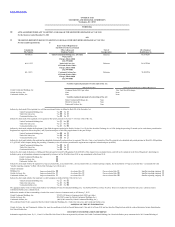 1
1 -
 2
2 -
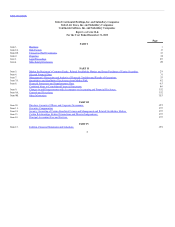 3
3 -
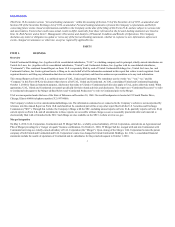 4
4 -
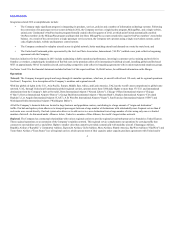 5
5 -
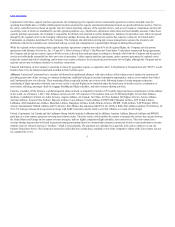 6
6 -
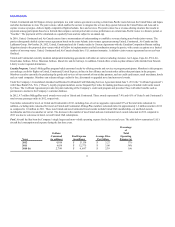 7
7 -
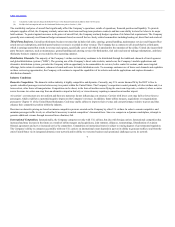 8
8 -
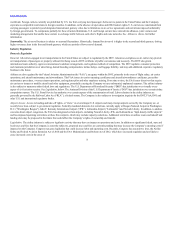 9
9 -
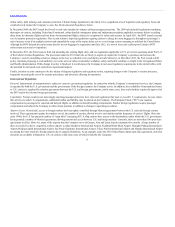 10
10 -
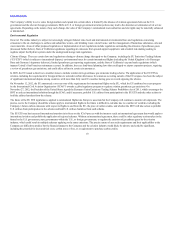 11
11 -
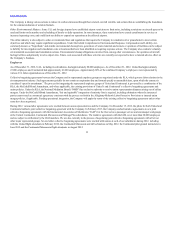 12
12 -
 13
13 -
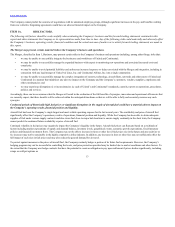 14
14 -
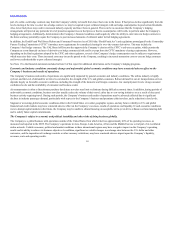 15
15 -
 16
16 -
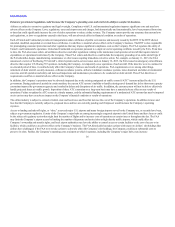 17
17 -
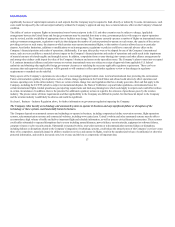 18
18 -
 19
19 -
 20
20 -
 21
21 -
 22
22 -
 23
23 -
 24
24 -
 25
25 -
 26
26 -
 27
27 -
 28
28 -
 29
29 -
 30
30 -
 31
31 -
 32
32 -
 33
33 -
 34
34 -
 35
35 -
 36
36 -
 37
37 -
 38
38 -
 39
39 -
 40
40 -
 41
41 -
 42
42 -
 43
43 -
 44
44 -
 45
45 -
 46
46 -
 47
47 -
 48
48 -
 49
49 -
 50
50 -
 51
51 -
 52
52 -
 53
53 -
 54
54 -
 55
55 -
 56
56 -
 57
57 -
 58
58 -
 59
59 -
 60
60 -
 61
61 -
 62
62 -
 63
63 -
 64
64 -
 65
65 -
 66
66 -
 67
67 -
 68
68 -
 69
69 -
 70
70 -
 71
71 -
 72
72 -
 73
73 -
 74
74 -
 75
75 -
 76
76 -
 77
77 -
 78
78 -
 79
79 -
 80
80 -
 81
81 -
 82
82 -
 83
83 -
 84
84 -
 85
85 -
 86
86 -
 87
87 -
 88
88 -
 89
89 -
 90
90 -
 91
91 -
 92
92 -
 93
93 -
 94
94 -
 95
95 -
 96
96 -
 97
97 -
 98
98 -
 99
99 -
 100
100 -
 101
101 -
 102
102 -
 103
103 -
 104
104 -
 105
105 -
 106
106 -
 107
107 -
 108
108 -
 109
109 -
 110
110 -
 111
111 -
 112
112 -
 113
113 -
 114
114 -
 115
115 -
 116
116 -
 117
117 -
 118
118 -
 119
119 -
 120
120 -
 121
121 -
 122
122 -
 123
123 -
 124
124 -
 125
125 -
 126
126 -
 127
127 -
 128
128 -
 129
129 -
 130
130 -
 131
131 -
 132
132 -
 133
133 -
 134
134 -
 135
135 -
 136
136 -
 137
137 -
 138
138 -
 139
139 -
 140
140 -
 141
141 -
 142
142 -
 143
143 -
 144
144 -
 145
145 -
 146
146 -
 147
147 -
 148
148 -
 149
149 -
 150
150 -
 151
151 -
 152
152 -
 153
153 -
 154
154 -
 155
155 -
 156
156 -
 157
157 -
 158
158 -
 159
159 -
 160
160 -
 161
161 -
 162
162 -
 163
163 -
 164
164 -
 165
165 -
 166
166 -
 167
167 -
 168
168 -
 169
169 -
 170
170 -
 171
171 -
 172
172 -
 173
173 -
 174
174 -
 175
175 -
 176
176 -
 177
177 -
 178
178 -
 179
179 -
 180
180 -
 181
181 -
 182
182 -
 183
183 -
 184
184 -
 185
185 -
 186
186 -
 187
187 -
 188
188 -
 189
189 -
 190
190 -
 191
191 -
 192
192 -
 193
193 -
 194
194 -
 195
195 -
 196
196 -
 197
197 -
 198
198 -
 199
199 -
 200
200 -
 201
201 -
 202
202 -
 203
203 -
 204
204 -
 205
205 -
 206
206 -
 207
207 -
 208
208 -
 209
209 -
 210
210 -
 211
211 -
 212
212 -
 213
213 -
 214
214 -
 215
215 -
 216
216 -
 217
217 -
 218
218 -
 219
219 -
 220
220 -
 221
221 -
 222
222 -
 223
223 -
 224
224 -
 225
225 -
 226
226 -
 227
227 -
 228
228 -
 229
229 -
 230
230 -
 231
231 -
 232
232 -
 233
233 -
 234
234 -
 235
235 -
 236
236 -
 237
237 -
 238
238 -
 239
239 -
 240
240 -
 241
241 -
 242
242 -
 243
243 -
 244
244 -
 245
245 -
 246
246 -
 247
247 -
 248
248 -
 249
249 -
 250
250 -
 251
251 -
 252
252 -
 253
253 -
 254
254 -
 255
255 -
 256
256 -
 257
257 -
 258
258 -
 259
259 -
 260
260 -
 261
261 -
 262
262 -
 263
263 -
 264
264 -
 265
265 -
 266
266 -
 267
267 -
 268
268 -
 269
269 -
 270
270 -
 271
271 -
 272
272 -
 273
273 -
 274
274 -
 275
275 -
 276
276 -
 277
277 -
 278
278 -
 279
279 -
 280
280 -
 281
281 -
 282
282 -
 283
283 -
 284
284 -
 285
285 -
 286
286 -
 287
287 -
 288
288 -
 289
289 -
 290
290 -
 291
291 -
 292
292 -
 293
293 -
 294
294 -
 295
295 -
 296
296 -
 297
297 -
 298
298 -
 299
299 -
 300
300 -
 301
301 -
 302
302 -
 303
303 -
 304
304 -
 305
305 -
 306
306 -
 307
307 -
 308
308 -
 309
309 -
 310
310 -
 311
311 -
 312
312 -
 313
313 -
 314
314 -
 315
315 -
 316
316 -
 317
317 -
 318
318 -
 319
319 -
 320
320 -
 321
321 -
 322
322 -
 323
323 -
 324
324 -
 325
325 -
 326
326 -
 327
327 -
 328
328 -
 329
329 -
 330
330 -
 331
331 -
 332
332 -
 333
333 -
 334
334 -
 335
335 -
 336
336 -
 337
337 -
 338
338 -
 339
339 -
 340
340 -
 341
341 -
 342
342 -
 343
343 -
 344
344 -
 345
345 -
 346
346 -
 347
347 -
 348
348 -
 349
349 -
 350
350 -
 351
351 -
 352
352 -
 353
353 -
 354
354 -
 355
355 -
 356
356 -
 357
357 -
 358
358 -
 359
359 -
 360
360 -
 361
361 -
 362
362 -
 363
363 -
 364
364 -
 365
365 -
 366
366 -
 367
367 -
 368
368 -
 369
369 -
 370
370 -
 371
371 -
 372
372 -
 373
373 -
 374
374 -
 375
375 -
 376
376 -
 377
377 -
 378
378 -
 379
379 -
 380
380 -
 381
381 -
 382
382 -
 383
383 -
 384
384 -
 385
385 -
 386
386 -
 387
387 -
 388
388 -
 389
389 -
 390
390 -
 391
391 -
 392
392 -
 393
393 -
 394
394 -
 395
395 -
 396
396 -
 397
397 -
 398
398 -
 399
399 -
 400
400 -
 401
401 -
 402
402 -
 403
403 -
 404
404 -
 405
405 -
 406
406 -
 407
407 -
 408
408 -
 409
409 -
 410
410 -
 411
411 -
 412
412 -
 413
413 -
 414
414 -
 415
415 -
 416
416 -
 417
417 -
 418
418 -
 419
419 -
 420
420 -
 421
421 -
 422
422 -
 423
423 -
 424
424 -
 425
425 -
 426
426 -
 427
427 -
 428
428 -
 429
429 -
 430
430 -
 431
431 -
 432
432 -
 433
433 -
 434
434 -
 435
435 -
 436
436 -
 437
437 -
 438
438 -
 439
439 -
 440
440 -
 441
441 -
 442
442 -
 443
443 -
 444
444 -
 445
445 -
 446
446 -
 447
447 -
 448
448 -
 449
449 -
 450
450 -
 451
451 -
 452
452 -
 453
453 -
 454
454 -
 455
455 -
 456
456 -
 457
457 -
 458
458 -
 459
459 -
 460
460 -
 461
461
 |
 |

Table of Contents
(a) Calculation excludes special charges identified in Note 21 to the financial statements included in Item 8 of this report.
(b) Excludes fuel consumption and cost for Continental Predecessor prior to October 1, 2010.
The availability and price of aircraft fuel significantly affect the Company’s operations, results of operations, financial position and liquidity. To provide
adequate supplies of fuel, the Company routinely enters into short-term and long-term purchase contracts and has some ability to store fuel close to its major
hub locations. To protect against increases in the prices of aircraft fuel, the Company routinely hedges a portion of its future fuel requirements. The Company
generally uses commonly used financial hedge instruments based on aircraft fuel or closely related commodities including heating oil, diesel fuel and crude oil.
Third-Party Business. United has third-party business revenue that includes fuel sales, catering, ground handling, maintenance services and frequent flyer
award non-air redemptions, and third-party business revenue is recorded in other revenue. The Company has a contract to sell aircraft fuel to a third party
which is earnings-neutral but results in revenue and expense, specifically cost of sale which is unrelated to the operation of the airline. United also incurs third-
party business expenses, such as maintenance, ground handling and catering services for third parties, fuel sales and non-air mileage redemptions, and those
third-party business expenses are recorded in other operating expenses.
Distribution Channels. The majority of the Company’s airline seat inventory continues to be distributed through the traditional channels of travel agencies
and global distribution systems (“GDS”). The growing use of the Company’s direct sales website, united.com, the Company’s mobile applications and
alternative distribution systems, provides the Company with an opportunity to de-commoditize its services, better control its content, make more targeted
offerings, better retain its customers, enhance its brand and lower its ticket distribution costs. To encourage customer use of lower-cost channels and capitalize
on these cost-saving opportunities, the Company will continue to expand the capabilities of its website and mobile applications and explore alternative
distribution channels.
Domestic Competition. The domestic airline industry is highly competitive and dynamic. Currently, any U.S. carrier deemed fit by the DOT is free to
operate scheduled passenger service between any two points within the United States. The Company’s competitors consist primarily of other airlines and, to a
lesser extent, other forms of transportation. Competition can be direct, in the form of another carrier flying the exact non-stop route, or indirect, where a carrier
serves the same two cities non-stop from an alternative airport in that city or via an itinerary requiring a connection at another airport.
Air carriers’ cost structures are not uniform and there are numerous factors influencing cost structure. Carriers with lower costs may deliver lower fares to
passengers, which could have a potential negative impact on the Company’s revenues. In addition, future airline mergers, acquisitions or reorganizations
pursuant to Chapter 11 of the United States Bankruptcy Code may enable airlines to improve their revenue and cost performance relative to peers and thus
enhance their competitive position within the industry.
Decisions on domestic pricing are based on intense competitive pressure exerted on the Company by other U.S. airlines. In order to remain competitive and
maintain passenger traffic levels, we often find it necessary to match competitors’ discounted fares. Since we compete in a dynamic marketplace, attempts to
generate additional revenue through increased fares oftentimes fail.
International Competition. Internationally, the Company competes not only with U.S. airlines, but also with foreign carriers. International competition has
increased and may increase in the future as a result of airline mergers and acquisitions, joint ventures, alliances, restructurings, liberalization of aviation
bilateral agreements and new or increased service by competitors. Competition on international routes is subject to varying degrees of governmental regulation.
The Company’s ability to compete successfully with non-U.S. carriers on international routes depends in part on its ability to generate traffic to and from the
entire United States via its integrated domestic route network and its ability to overcome business and operational challenges across its network
7
